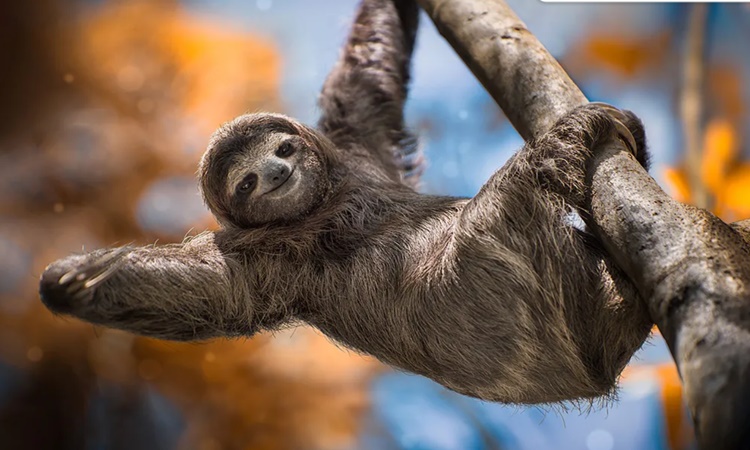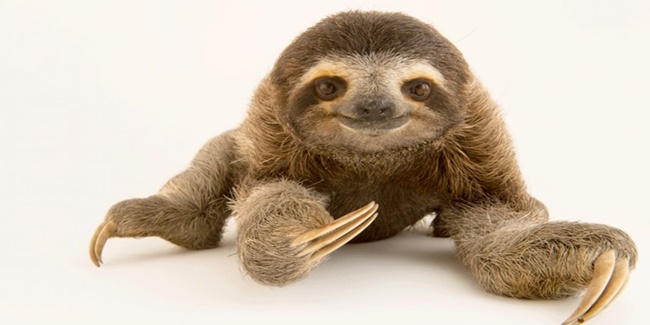Unveiling 6 Fun Facts About Sloths
SLOTHS – These six (6) sloth facts might just make you want to head straight to the closest sloth sanctuary.
Between the calm movements and perpetual smiles, it’s difficult not to develop an affection for sloths. Perched high in the trees of Central and South America, both two- and three-toed sloths have garnered so much adoration that some are moved to tears at the mere sight of them.
Despite their inclination to maintain distance from humans, there is still much to uncover about these creatures. What we do know, however, is truly captivating. How many animals, after all, harbor miniature ecosystems in their fur and contribute to the survival of avocados? These six insights into sloths are bound to make you seek out your nearest sloth sanctuary.

Sloths Navigate Mostly By Touch
Due to their poor eyesight and hearing, sloths depend predominantly on touch, utilizing their remarkable spatial memory. Their keen sense of smell aids in locating food. Their vision is particularly impaired, as they suffer from monochromacy, rendering them colorblind and mostly blind in dim light, and completely blind in bright light. Three-toed sloths, in fact, can’t see beyond 5 feet in front of them.
For Tree-Dwelling Animals, They Have a Terrible Sense of Balance
Even though they inhabit lofty tree canopies, sloths have little need for balancing abilities. They firmly grasp onto trees (so much so that they can slumber while suspended) and move at a sluggish pace. Over generations, the adaptations for balancing that assist other mammals in tree navigation have diminished in sloths. When they descend to the ground, typically for their weekly bathroom visit, they encounter significant difficulty moving around gracefully.
Sloths Are Weirdly Good Swimmers
Sloth physiology and senses are finely tuned for specific circumstances: hanging from trees and moving slowly within the canopy. On the ground, they are awkward and vulnerable. Therefore, their surprisingly adept swimming ability may come as a surprise. Remarkably, they move three times faster in water than they do in trees. The gas in their stomachs grants them buoyancy, making it effortless for them to paddle across even wide rivers in the Amazon.
The Three-Toed Pygmy Sloth Is Critically Endangered
The smallest both in size and population, the three-toed pygmy sloth is under critical threat, with an extremely high risk of extinction. Identified as a distinct species in 2001, they evolved separately on the island of Escudo de Veraguas, which became isolated from mainland Panama around 9,000 years ago. Researchers still lack substantial knowledge about their diet, habitat, or population, estimating it to be between 500 and 1,500.

Sloth Fur Contains an Entire Ecosystem
Each strand of sloth fur contains microcracks, enabling the growth of algae and fungi, some exclusive to sloths, due to their leisurely pace. This algae turns the fur green, providing an extra layer of camouflage during rainy seasons. Multiple distinct species of moths also reside in sloth fur, relying on the sloths for survival. When sloths descend to the forest floor for their weekly bathroom break, moths lay eggs in the dung, which then hatch and return to the sloth’s fur. Upon the insects’ decomposition, the algae is further fertilized, creating additional camouflage and, possibly, a nutritious treat for grooming sloths.
Despite its unappealing nature, this unkempt fur may conceal medicinal marvels, owing to unique fungi found exclusively on sloths. Researchers have identified at least 28 different strains on a three-toed sloth, some exhibiting potential in treating diseases, including breast cancer.
Elephant-sized sloths Used to Roam All of North America
While sloths may seem elusive today, they once thrived across North America, with some reaching sizes comparable to elephants. These creatures, known as large clawed ground sloths and Shasta ground sloths, were widespread during the late ice age. One fossil was even discovered more than 8,000 feet above sea level in the Rocky Mountains.
The Megalonyx, a large clawed ground sloth, measured about 10 feet in length and weighed approximately 2,200 pounds, while the Shasta ground sloth, slightly smaller, occupied a narrower habitat but still boasted a substantial size of 9 feet in length and up to 550 pounds. The existence of avocados can be partially attributed to these extinct giant sloths, as they were among the few large mammals capable of ingesting whole avocado pits and dispersing them to new locations. Nevertheless, human cultivation eventually took over the propagation of avocados.

